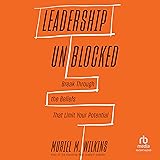Choosing the perfect gold bracelet or any piece of gold jewelry can often feel overwhelming. With so many options available, understanding what truly makes one type of gold different from another is crucial for making an informed purchase. As highlighted in the video above, a common question revolves around the various karat purities and their practical implications for everyday wear.
Many shoppers mistakenly believe that 24k gold, being the purest form, is always the best choice. However, as our expert jeweler explains, this isn’t always the case, especially when it comes to durability and longevity for items like a beautiful gold bracelet. The solution often lies in understanding the characteristics of different gold karats, with 14k gold frequently emerging as the top recommendation.
Understanding Gold Karats: The Foundation of Purity
Firstly, it’s essential to grasp what “karat” means in the context of gold. Karat (K) is a unit of measurement indicating the purity of gold in an alloy.
This system divides gold into 24 parts, where 24 karat signifies 100% pure gold. Each karat represents 1/24th of the whole.
For instance, 18k gold means 18 parts gold and 6 parts other metals, equating to 75% pure gold. Similarly, 14k gold contains 14 parts gold and 10 parts other metals, making it approximately 58.3% pure gold. These percentages are vital for understanding the metal’s properties.
The Soft Truth About 24k Gold Jewelry
Secondly, while 24k gold boasts unparalleled purity, it comes with a significant drawback for jewelry: its extreme softness. Pure gold is a very malleable metal, meaning it can be easily bent, scratched, and dented.
If you were to wear a 24k gold bracelet or ring daily, it would quickly show signs of wear and tear, losing its shape and luster. This inherent softness makes it impractical for pieces that will experience regular handling or impact, like a sturdy gold bracelet.
Moreover, the cost of 24k gold is substantially higher due to its pure content. Investing a significant amount in a piece that might easily be damaged or deformed can be disheartening for many buyers. Industry data consistently shows that while prized for investment, 24k gold is rarely chosen for functional jewelry designed for everyday use.
Why 14k Gold Stands Out for Durability and Everyday Wear
Thirdly, the primary reason jewelers, including the one in our video, often recommend 14k gold is its exceptional balance of purity and durability. By blending pure gold with other robust metals, such as copper, silver, and zinc, an alloy is created that is significantly harder and more resistant to damage.
This increased strength means a 14k gold bracelet is far less likely to scratch, bend, or warp during daily activities. It withstands the “banging around” of everyday life much better than its purer counterparts, maintaining its beauty and structural integrity for years.
For individuals seeking long-lasting jewelry that can endure active lifestyles, 14k gold represents a practical and sensible choice. Its composition is engineered to offer resilience without sacrificing the inherent value and aesthetic appeal of gold.
The Essential Role of Alloys in Gold Jewelry
Fourthly, the “other metals” in gold alloys play a crucial role beyond just increasing hardness. These alloying elements determine the color, strength, and overall workability of the gold.
For instance, adding more copper creates rose gold, while a specific combination of silver, palladium, and zinc results in white gold. These various colors offer aesthetic flexibility, allowing consumers to choose a gold bracelet that perfectly matches their personal style and skin tone.
The precise ratios of these metals are carefully formulated by metallurgists to optimize the gold for jewelry applications. This scientific approach ensures that your gold jewelry is not only beautiful but also fit for purpose, delivering both visual appeal and robust performance.
Beyond Durability: The Value and Versatility of 14k Gold
Fifthly, 14k gold also offers excellent value. While it contains less pure gold than 18k or 24k, its enhanced durability means it lasts longer and requires less frequent repair, offering better long-term value for the consumer.
Furthermore, its widespread availability and diverse range of designs make it a versatile choice. Whether you’re looking for a classic yellow gold bracelet, a contemporary white gold piece, or a romantic rose gold design, 14k gold provides a broad spectrum of options without compromising on quality or wearability.
Data from various jewelry markets indicates that 14k gold is a leading choice for engagement rings, wedding bands, and daily wear jewelry across North America. This popularity underscores its practical benefits and strong consumer appeal, making it a reliable investment for personal adornment.
Making the Right Choice for Your Lifestyle with 14k Gold
Lastly, when selecting gold jewelry, consider your lifestyle and how often you’ll wear the piece. If you lead an active life, work with your hands, or simply prefer jewelry that can withstand daily rigors, 14k gold is undoubtedly an excellent option.
It provides a robust foundation for a variety of designs, from delicate chains to substantial bracelets, ensuring that your precious item remains beautiful and intact for years to come. Ultimately, choosing 14k gold means investing in durability, versatility, and enduring beauty.











